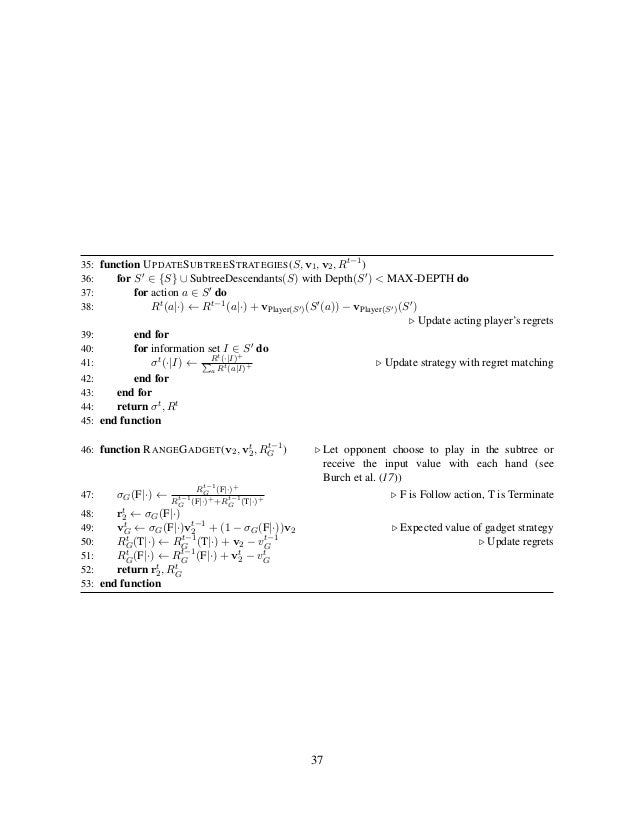Deep Stack Poker Strategy
Expert-Level Artificial Intelligence in Heads-Up No-Limit Poker
At the heart of DeepStack is continual re-solving, a sound local strategy computation that only considers situations as they arise during play. This lets DeepStack avoid computing a complete strategy in. In deep stack games, you will probably have to play all three streets of betting, following a profitable line of action from start to finish. You will also have to be familiar and well-practiced when it comes to certain poker techniques, such as 3-betting wide in position and 4-betting as a bluff, or semi-bluff against aggressive. Join our Pro Membership Program: I'm bringing you this video about deep stack poker tournament strategy from. Deep Stack Poker Tournament Strategy. Deep stack tournaments allow for the most actual play of all forms of poker, with the exception of no blind increase events. The entire premise of a deep stack tournament is for players to really let their skills do the talking and to eliminate as much luck as possible.
Links
Twitch YouTube Twitter
Downloads & Videos Media Contact
DeepStack bridges the gap between AI techniques for games of perfect information—like checkers, chess and Go—with ones for imperfect information games–like poker–to reason while it plays using “intuition” honed through deep learning to reassess its strategy with each decision.
With a study completed in December 2016 and published in Science in March 2017, DeepStack became the first AI capable of beating professional poker players at heads-up no-limit Texas hold'em poker.
DeepStack computes a strategy based on the current state of the game for only the remainder of the hand, not maintaining one for the full game, which leads to lower overall exploitability.
DeepStack avoids reasoning about the full remaining game by substituting computation beyond a certain depth with a fast-approximate estimate. Automatically trained with deep learning, DeepStack's “intuition” gives a gut feeling of the value of holding any cards in any situation.
DeepStack considers a reduced number of actions, allowing it to play at conventional human speeds. The system re-solves games in under five seconds using a simple gaming laptop with an Nvidia GPU.
The first computer program to outplay human professionals at heads-up no-limit Hold'em poker
In a study completed December 2016 and involving 44,000 hands of poker, DeepStack defeated 11 professional poker players with only one outside the margin of statistical significance. Over all games played, DeepStack won 49 big blinds/100 (always folding would only lose 75 bb/100), over four standard deviations from zero, making it the first computer program to beat professional poker players in heads-up no-limit Texas hold'em poker.
Games are serious business
Don’t let the name fool you, “games” of imperfect information provide a general mathematical model that describes how decision-makers interact. AI research has a long history of using parlour games to study these models, but attention has been focused primarily on perfect information games, like checkers, chess or go. Poker is the quintessential game of imperfect information, where you and your opponent hold information that each other doesn't have (your cards).
Until now, competitive AI approaches in imperfect information games have typically reasoned about the entire game, producing a complete strategy prior to play. However, to make this approach feasible in heads-up no-limit Texas hold’em—a game with vastly more unique situations than there are atoms in the universe—a simplified abstraction of the game is often needed.
A fundamentally different approach

DeepStack is the first theoretically sound application of heuristic search methods—which have been famously successful in games like checkers, chess, and Go—to imperfect information games.

At the heart of DeepStack is continual re-solving, a sound local strategy computation that only considers situations as they arise during play. This lets DeepStack avoid computing a complete strategy in advance, skirting the need for explicit abstraction.
During re-solving, DeepStack doesn’t need to reason about the entire remainder of the game because it substitutes computation beyond a certain depth with a fast approximate estimate, DeepStack’s 'intuition' – a gut feeling of the value of holding any possible private cards in any possible poker situation.
Finally, DeepStack’s intuition, much like human intuition, needs to be trained. We train it with deep learning using examples generated from random poker situations.
DeepStack is theoretically sound, produces strategies substantially more difficult to exploit than abstraction-based techniques and defeats professional poker players at heads-up no-limit poker with statistical significance.
Download
Paper & Supplements
Hand Histories
Members (Front-back)
Michael Bowling, Dustin Morrill, Nolan Bard, Trevor Davis, Kevin Waugh, Michael Johanson, Viliam Lisý, Martin Schmid, Matej Moravčík, Neil Burch
low-variance Evaluation
The performance of DeepStack and its opponents was evaluated using AIVAT, a provably unbiased low-variance technique based on carefully constructed control variates. Thanks to this technique, which gives an unbiased performance estimate with 85% reduction in standard deviation, we can show statistical significance in matches with as few as 3,000 games.
Abstraction-based Approaches
Despite using ideas from abstraction, DeepStack is fundamentally different from abstraction-based approaches, which compute and store a strategy prior to play. While DeepStack restricts the number of actions in its lookahead trees, it has no need for explicit abstraction as each re-solve starts from the actual public state, meaning DeepStack always perfectly understands the current situation.
Professional Matches
We evaluated DeepStack by playing it against a pool of professional poker players recruited by the International Federation of Poker. 44,852 games were played by 33 players from 17 countries. Eleven players completed the requested 3,000 games with DeepStack beating all but one by a statistically-significant margin. Over all games played, DeepStack outperformed players by over four standard deviations from zero.
Heuristic Search
At a conceptual level, DeepStack’s continual re-solving, “intuitive” local search and sparse lookahead trees describe heuristic search, which is responsible for many AI successes in perfect information games. Until DeepStack, no theoretically sound application of heuristic search was known in imperfect information games.
Deep Stack Tournament Strategy
In Deep Stack tournaments the number of chips you start with is greater in comparison to regular freezeout MTTs. The blind levels are also twice as long, which makes them preferred by tight/conservative and skilled players who adopt a small ball game. It also reduces the risks and variance of MTTs by allowing you to play under less pressure.
In a typical deep stack tournament you will receive 5,000 starting chips with 10/20 blinds. Compare this to turbo MTTs structures at PokerStars (which give you 500 or 1,000 chips at 10/20 blinds) and you can see the difference immediately.
Best Site for Deep Stack Tournaments: Titan Poker – $500 Bonus!
The best site for non-US players to play Deep Stack tournaments is Titan Poker. They now run the exciting European Deep-stack Championship III, and have a number of regular deepstack tournaments along with deepstack satellites from $3 – $10 entry fees.
For US players PokerStars is the site we recommend for deep stack tournaments. Each day PokerStars runs deepstack tournaments with buy-ins of $10 -$30. The biggest deepstack event at PokerStars takes place on Saturdays with a buy-in of $100.
Deep Stack Tournament Strategy
Because deep stack tournaments run differently to regular online tournaments you need to slow down your game
The first thing noticeable in deep stack tournaments (e.g. WSOP) is that aggressive players who are not used to the format will make too many re-raises and all-in moves pre-flop. This won’t be as effective in deep stack tournaments because fewer players will call you. Most of the time any player who calls you will have you beat.
Re-raises are less effective because the stack sizes are much deeper. In the beginning of a regular online tournament a re-raise to 300 chips may represent 30% of your chips (starting on 1,000). However, in deepstack tournament starting on 5,000 chips this will represent only 6% of your chips. Thus making it less likely to call. Players who do this too often tend to become frustrated.
There are 3 basic approaches to accumulating chips in deepstack events:
The first is playing passively. This means limping into many flops and seeing as many as possible. Your aim is to exploit your opponents weaknesses in post-flop play, and this in itself requires excellent post-flop reading ability on your part. Rather than setting a trap, you’re really just waiting to corner a bad player. You’ll make big wins in these pots which compensate for the flops you missed.
The second type of strategy is the small ball approach (utilized by Negreanu and Hansen). In deepstack tournaments small ball poker means seeing as many flops as possible while attempting to limit the size of pots and cost to see the next card. This is to reduce the risks and cost of play. You’re effectively trying to “slow” the play down and continually put pressure on your opponents by making moves first.
The third approach for deepstack tournaments is TAG play (tight aggressive). Under this strategy you’re only playing premium hands or others when in position. The goal is to make as much money in the pot pre-flop as possible, so your post-flop play doesn’t matter as much. This is an easier strategy to adopt for weaker tournament players.
Conclusion on playing Deep Stack Tournaments
Overall, deep stack tournaments are designed for “better” tournament players. Reading opponents and taking advantage of position is more important than blind stealing or being uber aggressive. Deepstack tournaments in many ways are more resembling of cash games than turbo MTTs/SNGs. Patience plays a bigger role than other tournaments.
Play Where US Players are Welcome!BetOnline Accepts players from the USA, and has soft games compared to Pokerstars and Full Tilt.
>>Play at BetOnline Now (US Players Accepted)!<<Related articles:
Odd but true… this strategy may work early on in the tournament… but when blinds and antes start getting larger and larger after a couple of hours you must bet more aggressively and play a much wider range of hands. Although ‘small ball’ poker style may help conserve chips and help win smaller pots with not much competition against tight players that fold a lot; adopting a liberal raise and 3 to 4 betting style of play especially post flops are great ways to dramatically increase your chipstacks! That’s the way to play later on in tournaments… but you may find some loose cannon players early on that love donking off many chips around 25%-50% preflop and all of it on the river. Catching them and winning all their chips would be supremely awesome if you knew they are deliberately doing that to combat against ‘small ball betting strategies’… just got to put them on a their polarized hands and call or reraise them all in if you are 100% you have them loose cannons beat.
How To Play Deep Stack Poker
Leave a Reply

Online Poker Strategy
- $400
- $2000

Deep Stack Poker Room
T&C apply to bonus offerings